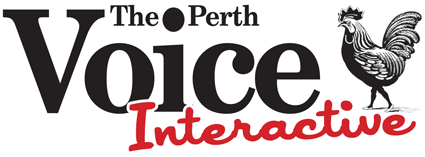A RADIOACTIVE Land Rover was taken to Leeuwin Barracks after atomic testing up north, adding fuel to what’s often been brushed off as an urban myth—that’s it’s still buried there.
Declassified Navy documents from the 1950s show the Land Rover was transported from the site of Britain’s first nuclear test at the Monte Bello Islands and unloaded at Victoria Quay in Fremantle before being driven to HMAS Leeuwin Navy base for decontamination.
But what happened after that is still hotly contested by navy veterans, with those such as John Shotton convinced his now-deceased mate Bob Smith dug a big hole behind the barracks and dumped the vehicle there when it proved impossible to clean (“Radioactive riverside,” Herald, November 21, 2015).

• The mushroom cloud above the Monte Bello Islands following Britain’s first successful nuclear detonation, code named Operation Hurricane.
Others like John Hogan think that’s bunkum, as he reckons rules around dealing with contaminated material brought back from the nuclear tests were very strict.
Defence says it ran ground-probing radar over the most likely spots and came up empty handed.
Following the nuclear testing in the 50s and 60s, it wasn’t unusual for radioactive material to be buried if it couldn’t be cleaned; a rehabilitation program at the Monte Bellos codenamed Operation Capelin specifically calls for the “burial of contaminated debris.”
Another clean up operation, code named Operation Hercules V at the Maralinga testing site in South Australia, gave instructions to “clean or bury any contaminated vehicles and other plant and equipment that cannot be cleaned”.
What is clear from the declassified documents is that the Land Rover was “hot” after being used in clean up and recovery operations on Tremouille Island following Operation Hurricane, where a plutonium implosion bomb had been detonated just offshore in the hull of the HMS Plym a year earlier.

• The boom defence vessel HMAS Karangi transported the Land Rover to the Monte Bello Islands and back to Freo. Photo courtesy
Australian War Memorial
Hosed down
“Lt Andrews examined the Land Rover ashore and reported that the outside of the vehicle was relatively clear and internal readings of 120cps,” the report from the Karangi on November 14, 1953 reads.
“Embarkation was progressed on receipt of this information.
“The Land Rover was hosed down whilst slung from the derrick: the external reading on embarkation was 30cps.”
While this is far from Fukushima-level radiation, a 2006 report published by the Department of Veterans Affairs into health effects and exposure levels of radiation following Australia’s involvement in nuclear tests notes that having the Land Rover aboard the boom defence vessel HMAS Karangi on its voyage back to Fremantle was enough to contaminate the ship.
After being unloaded at the A-shed on Victoria Quay on November 24, 1953, the Land Rover was driven to Leeuwin Barracks, a driving distance of less than five minutes.
It was reported in official documents to be “radioactive.”

• HMAS Karangi lies rusting in a ship’s graveyard at Homebush Bay, Sydney. Photo courtesy NSW Office of Environment and Heritage. Photographer Brad Duncan
“HMAS Leeuwin and Western Command Workshop” engineers are noted as work groups who were exposed to elevated radiation levels from driving and decontaminating the vehicle on land.
“Primarily wet methods of decontamination, hosing and use of detergents minimised the risk of ingestion and inhalation. There is a reference to scrubbing with a ’wire brush’, the DVA report noted, although it doesn’t mention whether this proved successful.
Radiation
It also notes that while the handling and transportation of the radioactive Land Rover exposed the workers and drivers to slightly elevated levels of radiation, there was no evidence that it led to health complications.
As for the HMAS Karangi, she was sold off in 1966, partially scrapped and now lies among the mangroves along with several other rusted hulks at Homebush Bay, Sydney.
by KAYLEEN BELL
and STEVE GRANT

Great summary. I was there and drove around the island with a boffin from Oxford uni for approx a week+ in that land rover!! Pics to prove it!!